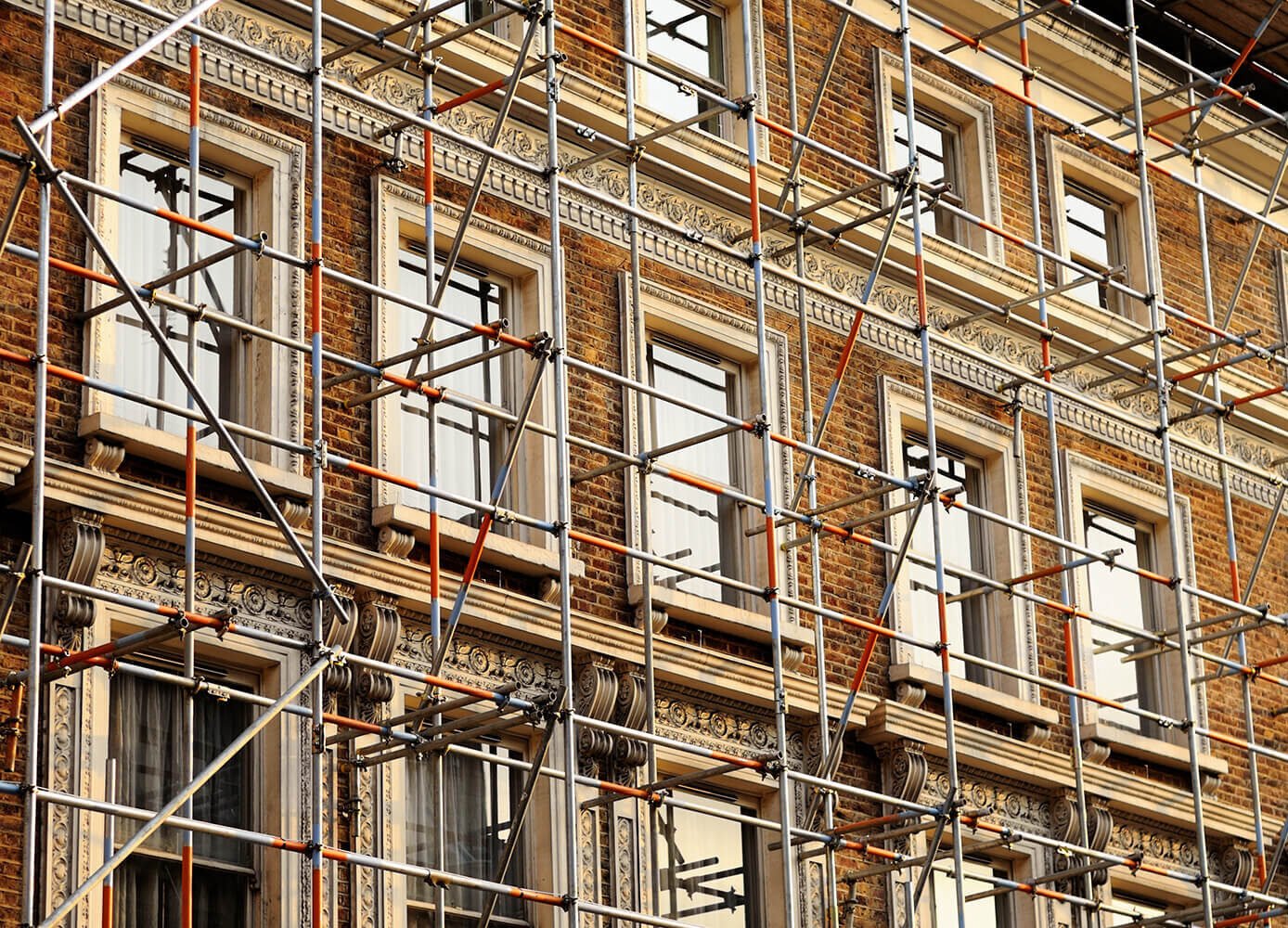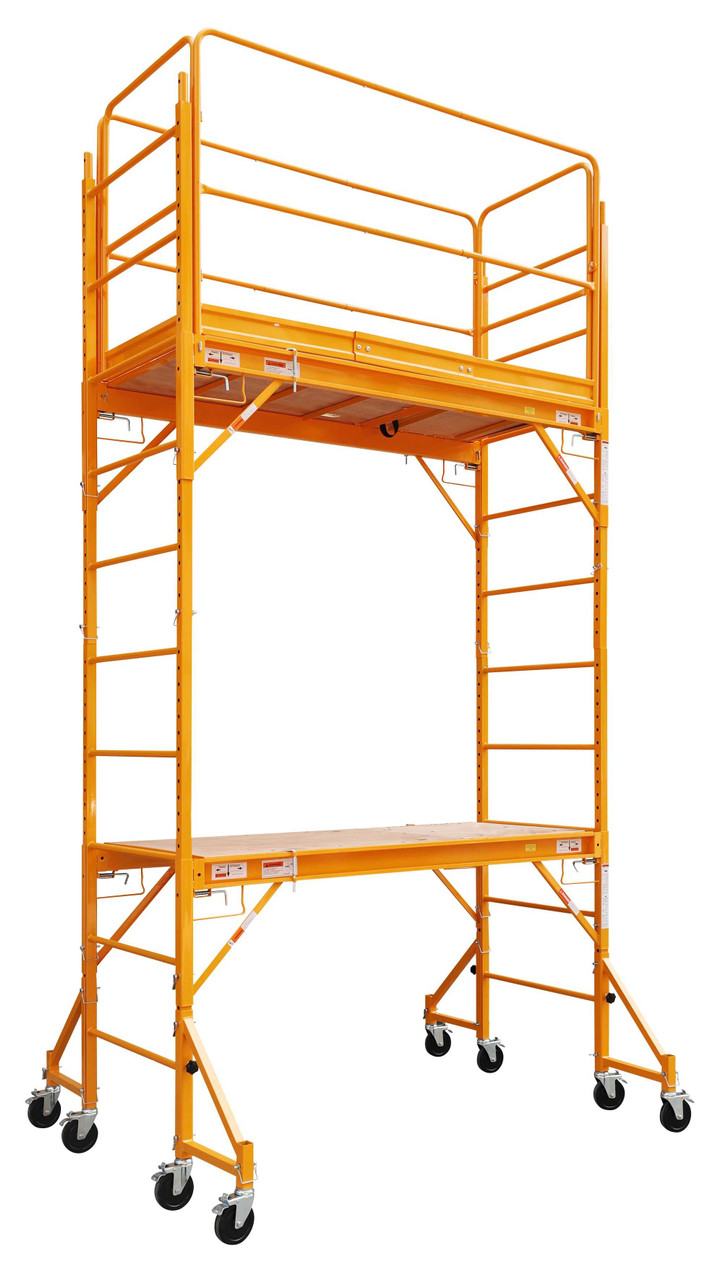Discovering the Numerous Sorts Of Scaffolding Made Use Of in Building Tasks
The building and construction sector depends heavily on different kinds of scaffolding to fulfill details project needs, each offering distinctive benefits and applications. Typical frame scaffolding provides a strong structure for general jobs, while suspended scaffolding is important for work on high-rise frameworks.

Standard Structure Scaffolding
Typical structure scaffolding is among the most commonly utilized techniques in the building market as a result of its effectiveness and convenience. This system contains straight and vertical structures that are constructed to create a stable platform for products and workers. The main components include upright articles, horizontal ledgers, and diagonal dental braces, which together give a solid structure that can sustain considerable lots.
One of the vital advantages of standard frame scaffolding is its versatility to numerous building and construction tasks, varying from property structures to big business structures. The modular style enables easy assembly and disassembly, making it reliable for both temporary and lasting tasks. Additionally, the system can be personalized in elevation and width, fitting various structure styles and website problems.
Safety is extremely important in scaffolding applications, and standard structure systems are geared up with guardrails and toe boards to stop drops and ensure worker security. In addition, normal inspections and adherence to safety and security laws are critical in keeping the integrity of the scaffold. Generally, typical structure scaffolding continues to be a fundamental choice in the building market, offering a trusted system for labor and enhancing overall project efficiency

Suspended Scaffolding
Put on hold scaffolding provides a special option for building projects that call for access to elevated surface areas, especially in situations where typical framework scaffolding may be not practical. This sort of scaffolding is generally suspended from the roofing or upper degrees of a structure, making use of a system of wheels, ropes, and platforms to develop a working area that can be adapted to different elevations.
One of the main benefits of suspended scaffolding is its adaptability. It can be quickly repositioned or reduced to fit changes in building needs, making it ideal for jobs such as window setup, frontage work, and maintenance on skyscraper buildings. Furthermore, the marginal footprint of suspended scaffolding enables for better use of ground area in city environments, where room is commonly limited.
Security is an essential factor to consider in the use of put on hold scaffolding. Overall, put on hold scaffolding provides a reliable and effective remedy for accessing hard-to-reach locations in different building and construction situations, enhancing both efficiency and safety and security on site.
System Scaffolding
System scaffolding, commonly considered a modern-day remedy in the scaffolding market, includes pre-engineered components that can be quickly constructed and adjusted for different construction projects. Scaffolding. This type of scaffolding is identified by its modular layout, which enables flexibility and efficiency on work sites, accommodating various heights and structural needs
Generally made from high-strength steel or light weight aluminum, system scaffolding uses enhanced resilience and security. The elements include upright messages, straight ledgers, and angled dental braces, which interconnect safely, ensuring a durable framework. The style typically incorporates standard installations, simplifying setting up and disassembly processes, therefore decreasing labor time and visit prices.

Rolling Scaffolding
Moving scaffolding is a versatile option to conventional set scaffolding, designed for movement and convenience of usage on building sites. This kind of scaffolding contains a platform sustained by frames with wheels, enabling workers to easily relocate it as required. The flexibility function dramatically boosts performance, as it minimizes downtime connected with setting up and disassembling repaired scaffolding.
Usually constructed from light-weight products such as aluminum or steel, rolling scaffolding offers a sturdy yet mobile service for projects calling for regular repositioning - Scaffolding. It is particularly advantageous in jobs such as painting, drywall installment, and electrical work, where accessibility to different heights and locations is necessary
Safety is critical in rolling scaffolding design, with functions such as locking wheels to avoid unplanned motion when in usage, and guardrails to secure workers from drops. Additionally, several models are flexible in height, fitting various job requirements.
Cantilever Scaffolding

The layout of cantilever scaffolding commonly involves utilizing arms or braces secured to a structure or framework, making it possible for the system to expand outward safely. Safety is critical; therefore, these scaffolds should be engineered to endure numerous tons and ecological problems. Normal assessment and maintenance are vital to guarantee architectural integrity and worker safety.
Cantilever scaffolding is preferred for its flexibility and efficient usage of area, making it a popular choice in city environments where area restrictions are typical. It assists in simpler accessibility to high elevations, inevitably adding to the general performance of construction jobs. Just helpful hints like all scaffolding types, appropriate training and adherence to safety standards are important for employees utilizing cantilever scaffolding.
Conclusion
Conventional frame scaffolding supplies stability, while put on hold scaffolding provides convenience for raised tasks. System scaffolding vs shoring scaffolding assists in quick assembly, and rolling scaffolding improves flexibility for differing work settings.
Standard framework scaffolding offers a sturdy foundation for basic tasks, while put on hold scaffolding is essential for work on high-rise frameworks.Moving scaffolding is a flexible alternative to traditional fixed scaffolding, created for flexibility and simplicity of use on building and construction sites. As with all scaffolding types, appropriate training and adherence to safety standards are vital for workers using cantilever scaffolding.
Traditional structure scaffolding supplies stability, while suspended scaffolding uses flexibility for elevated tasks. System scaffolding assists in fast setting up, and rolling scaffolding boosts movement for differing job environments.